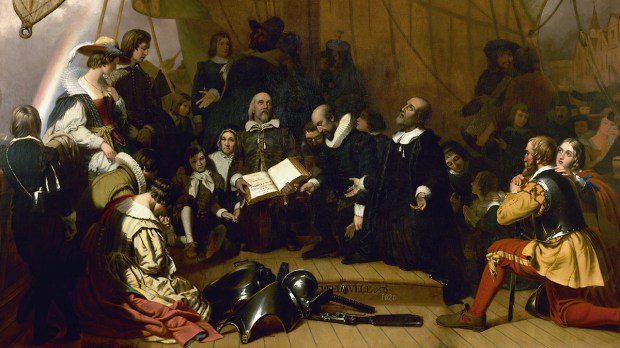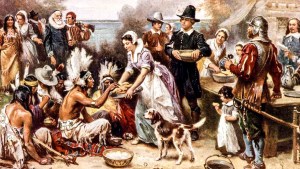Lenten Campaign 2025
This content is free of charge, as are all our articles.
Support us with a donation that is tax-deductible and enable us to continue to reach millions of readers.
Was there a secret Catholic among the Pilgrims who set foot on Plymouth Rock 400 years ago?
One budding scholar contends that Myles Standish, immortalized by Henry Wadsworth Longfellow in the epic poem “The Courtship of Miles Standish,” was “the first American Catholic.”
According to the Encyclopaedia Britannica, Standish probably first met the Pilgrims when, as a young man, the English soldier was fighting in the Netherlands, where the Protestant group was taking refuge. It would have been there that he joined them for their venture to the New World, sailing to England and then crossing the North Atlantic on the Mayflower in 1620. He served as their military leader when they established Plymouth Colony in Massachusetts.
“In 1627 he was a leader of the group in the colony that bought out the London investors,” the encyclopedia says. “In 1628 Standish helped to break up the colony of Thomas Morton at nearby Merry Mount when it proved to0 unpuritanical to suit Plymouth.”
But that should not lead us to believe that he was a Puritan, at least not in the estimation of Declan Leary, writing for Crisis magazine.
Though historians have assumed that Standish was a Pilgrim, Leary, Collegiate Network Fellow at The American Conservative, says he might well have come from the Catholic side of the Standish family, which had a Catholic chapel at their estate, Standish Hall, in England. Among the future martyrs who ministered at Standish Hall was St. Edmund Campion.
Leary notes that Standish named two of his sons Charles: the first, two years after Standish had visited London in the wake of King Charles I’s coronation. Charles I was strongly sympathetic to Catholics, and the antipathy of Protestants to him was even more severe by 1635, when Standish named another son Charles, the first child having died young. Using the name of this monarch not once but twice, in the milieu in which he lived, was brash enough to suggest that he was a Catholic.
Leary continues:
The Standishes of Standish Hall, meanwhile, were royalists to the very last. Even a generation later, when Charles’s son James converted at last to the Catholic Faith and the Parliament repaid him with war, the Standishes remained steadfast. In 1694, five years after James’s crown was usurped by the Protestant William of Orange, eight gentleman of Lancashire were tried for treason against William’s government but were not convicted. Centuries later, in 1934, ciphered papers recovered from Standish Hall were decoded, showing that there was, in fact, a conspiracy at the manor to restore James to the throne. At least two Standishes, William and Ralph—nephews or cousins of some degree to Myles, who had died twenty-eight years before and an ocean away—were among the leaders of the underground alliance for the Catholic king.
In addition, Standish never joined the Pilgrims’ church at Plymouth, a good indication that he held onto his Catholic faith, at least secretly.
Leary acknowledges that other Catholics preceded Standish on the North American continent: In 1565, Fr. Francisco López de Mendoza Grajales had offered Mass in St. Augustine, Florida, after all. But it wasn’t until Plymouth that the continent became America, he says.
“A giant in heart, who believed in God and the Bible — we cannot know for sure,” Leary concludes. “But for his sake, and ours, we can hope that this is in fact what Myles Standish was, though the odds were great against him.”



